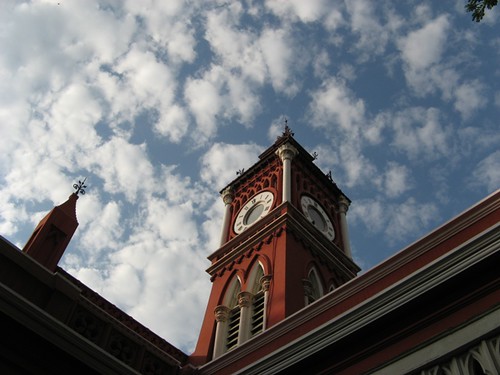According to the World Health Organization, nearly 10 percent of the world’s population is disabled. Going by this statistics, it means that nearly 100 million in India are disabled (Karuna Gopal, March 29 2010, Urban Vision). How inclusive has India been in terms of accommodating the needs of this community? Sadly, government apathy, inconsiderate communities, lack of awareness and information has very nearly erased this talented community from participating in social life and contributing to the economy. What prevents this community from coming out from the confines of their homes and participating in societal activities? Put very simply, it is the unfriendly urban space that is a major deterrent to coming out into the open.
Bangalore is touted as a modern city offering amenities that can be found in any global city. Yet this city has not been able to make its urban space disabled-friendly. Let alone parks, restaurants, shopping and entertainment spaces, basic and higher educational institutions remain unconcerned and callous in their attitudes towards the differently-abled. Educational institutions are the key socializing agencies in society. It is the task of the institution to foster values like respect for diversity. But what happens when those who manage the institutions are totally apathetic to the needs of the differently-abled? Result – schools, colleges and other higher educational institutions that are not geared up to meet the physical needs of this community.
Higher education is the key to gainful employment and with eduflation, it is mandatory that one possess at the least a professional or a post-graduate degree. In addition to coping with the demands of the modern world, the differently-challenged (specifically the orthopedically challenged) find it extremely tiresome to cope with the complete lack of facilities in city colleges. Perhaps the lack of such facilities is indicative of the erasure of this community from the landscape of higher education. A little planning and thought on the part of those managing city colleges would have gone a long way in helping this community negotiate the physical space. A casual survey of four colleges in North Bangalore revealed that not a single one of these have ramps fitted out. However, two colleges, Maharani Lakshmi Ammani College for Women and Mount Carmel College have elevators which the differently-challenged are allowed to use. Not a single college has specially-fitted restrooms. This lack of physical infrastructure is a key issue in the debate on disability and education. It is this lack of physical infrastructure that deters the differently-challenged from entering the higher educational space. With the lack of infrastructure, commuting to the college, negotiating the stairs, using the restrooms becomes a burdensome issue. Vikas (name changed to protect identity) reveals that it was sheer torture managing the stairs the college in Malleswaram from where he received a BSc degree. He said, “I simply couldn’t manage the stairs and had to be carried up and down everyday. We had engaged an auto to take me to college and the driver along with a couple of my friends would carry me up. As for using restrooms, I don’t want to relive the torture! It’s so much easier in the corporate sector where I am now working. Our facility has a ramp, elevator and specially-fitted restrooms. I don’t have to depend on anyone for getting around!” This sums up the preparedness of city colleges to accommodate diversity. It is disheartening that college managements have not thought of ways to surmount accessibility issues. It is merely ignored as a minority issue.
It is not only the orthopedically challenged who face difficulties in the higher education sector. The visually and auditory challenged too face obstacles. Few colleges have libraries with audio books. The faculties are not trained to handle special needs. The auditory-challenged find it extremely difficult to cope with classroom teaching. Not many faculty members use slide presentations or give handouts. Note taking then becomes a challenge and they have to rely on their classmates. With all these issues, the differently-challenged find it tiresome to cope with higher education. Unless certain policies are made at higher levels ordaining higher educational institutions to accommodate special needs, the landscape looks pretty bleak. What India needs is a comprehensive policy on disability and sensitization at community levels to ensure that this talented community is included into the wider fabric of socio-economic life.

![]() photo credit: Kailash Naik
photo credit: Kailash Naik
